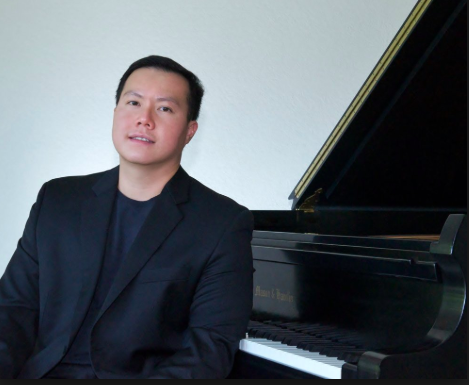Jason Sia in Review
Jason Sia, piano
Weill Recital Hall at Carnegie Hall, New York, NY
Thursday, June 21, 2018
In the movie business, summertime is blockbuster time, so why should it be any different in the recital business? California-based pianist Jason Sia evidently thinks so, as he programmed a string of famous warhorses, with a few oddly sophisticated fellows thrown in. A small turnout listened intently. The results were decidedly mixed for this reviewer.
Let me begin with Mr. Sia’s strengths: he has a beautiful piano tone (not so easy to achieve), and a generally lyrical sense of line that is very fluid. On the flip side: he didn’t breathe, everything was rushed, he lacked a true technical command of these fiendishly difficult musical icons, he overpedaled, he had memory problems (it’s okay to use the score!), he had a curiously uncomfortable stage presence, he lacked charisma, he seemed curiously uninvolved most of the time, and he was reluctant to resolve dissonance into consonance, one of the important hallmarks of musicality. Perhaps nerves got the better of him.
Lest I seem too cranky, let me single out the pleasing moments from the program, and there were some! The Rachmaninoff/Schultz transcription of the 18th variation from Rhapsody on a Theme by Paganini, Debussy’s Rêverie (despite a thumping pedal foot), and the Gershwin/Wild song-etudes (The Man I Love, Embraceable You, Summertime) were all played with sensitivity and style, and Clair de lune had good atmosphere, if lacking a bit in accuracy. The Schubert/Liszt Ave Maria had excellent voicing amid the millions of notes, the Wagner/Liszt Liebestod was played orchestrally rather than vocally, which one could make a case for, and Debussy’s L’Isle joyeuse had moments of great sensitivity and color, though again, technical control was shaky.
Elsewhere, there were senseless amputations of Beethoven’s Sonata Op. 27, No. 2 (sloppy, dynamically incorrect, and the second movement omitted), the Chopin Heroic Polonaise (just shorten the difficult left-hand octave section- maybe no one will notice), and the iconic Gershwin Rhapsody in Blue (begun in the middle at the lyrical theme, and played sloppily to its conclusion). This shows a strange lapse in taste, which was contradicted by Mr. Sia’s elegant playing from time to time. Ravel’s Ondine from Gaspard de la nuit, a frightening encyclopedia of nasty technical things, was mostly improvised, though I sensed that Mr. Sia’s spirit was in the right place. Liszt’s famous Hungarian Rhapsody No. 2 was spirited but slapdash.
Mr. Sia’s biography states a commitment to avant-garde music. He even won three awards for it, so I wondered why there wasn’t any on his program. I don’t wish to discourage Mr. Sia, I’m sure he brings great enjoyment to his followers, but when programming the “greatest hits” of the instrument, it is wise to be truly relaxed, carefree, and able to execute them accurately, as well as with individuality.

